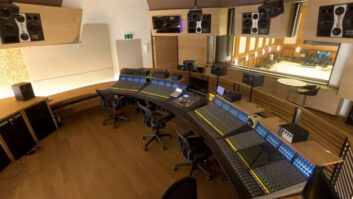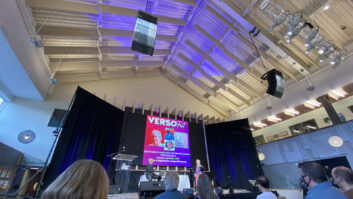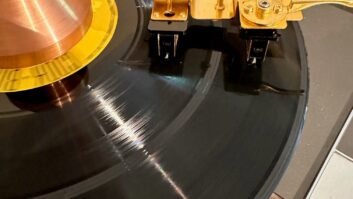The Vienna Symphonic Library has announced the upcoming addition to its virtual orchestra solution: “space.” Vienna’s new MIR (Multi-Impulse Response) technique, commonly known as “sampling reverb,” is a method of putting any signal inside an actual acoustic space.
This new component allows composers and musicians complete and independent control over both the instruments and the acoustic environment in which they perform. For example, the user could place a small chamber ensemble inside the intimate parlor of an old European palace, or bring the entire Wagnerian orchestra into an actual grand concert hall. Also, a simple graphic user interface allows the user to click and drag the instruments of the orchestra onto the virtual stage. Each instrument’s response characteristic is individually and automatically calculated within the context of the overall space, creating an accurate, unified ensemble sound with pristine imaging in any acoustic environment. In addition to stereo, all surround sound formats including 5.1 and 7.1 are supported.
“This approach is completely different, much more realistic and flexible than that of other orchestral sample libraries that are recorded inside a concert hall,” said Vienna founder Herb Tucmandl. “The creative restrictions of those reverb methods are massive. Spatial characteristics are frozen and unchangeable, the user has no flexibility to alter the size or acoustic properties of the room, or to change the space altogether. Plus, each time more than one note is played, the sound of that reverb is duplicated over and over again. Play three notes and the unfortunate result is the cumulative, layered sound of three halls. Vienna Symphonic Library’s samples were intentionally recorded in a smaller controlled environment, so that we could allow our users the ability to choose whatever concert hall or recording environment they wish with technical, real-world accuracy using our MIR reverb technique.”
The “stage” of a concert hall can be subdivided into a number of sectors, and from each sector, a special impulse can be released in up to seven directions. The impulse response can then be recorded using surround techniques from ideal positions in the hall. After the impulses are processed, the user places defined instruments and instrument groups of the Vienna Symphonic Library onto this virtual stage with the help of an intuitive graphic interface. Due to the close association between the library and the reverb engine, the typical directional characteristics of each instrument are taken into consideration when formulating the “correct” sets of impulse responses. For instance, the horns, which are directed to the rear, can be assigned different spatial aspects than the frontally blaring trumpets. In addition, the reverb engine serves as a complete mixing station. With a few intuitive movements, the user can control every parameter of a virtual orchestration, including volume, position on the stage and distance from the virtual microphone. All of the necessary spatial parameters are connected in one macro environment. There will also be expert settings in the background, enabling more refined control of the environment and instrument placement. The results can be heard in real time in Preview mode. The high-definition final results will initially be calculated offline. Output on up to eight audio channels covers surround formats, allowing the complete, accurate re-creation of the entire acoustic space in 5.1, 7.1 and other 3-D systems.
Vienna Symphonic Library’s MIR is expected to be released in early 2004. The product is distributed in North America by ILIO.
For more, visit ILIO at www.ilio.com.







